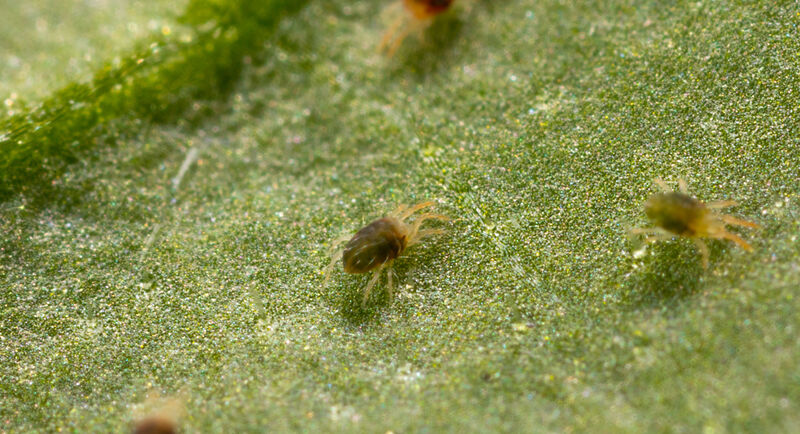
Spider Mites
Spider mites are pests of many crops throughout the world. By far the most common species in greenhouses is the two-spotted spider mite, Tetranychus urticae. Their great reproductive capacity means that they are capable of destroying plants very rapidly. Additionally, the widespread use of chemical control agents has resulted in the spider mite developing resistance to a wide range of pesticides.
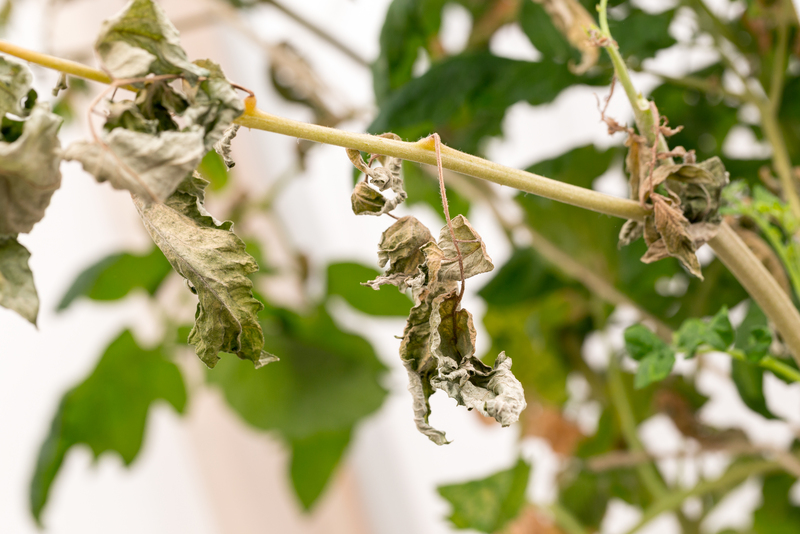
Overview of Mite Plant Damage
Larvae, nymphs and adults of two-spotted spider mites cause damage to the host plant by feeding on plant tissue and plant sap, primarily on the underside of leaves where they pierce the cells and suck out the contents. These dead cells become yellow. As damage increases, whole leaves turn yellow and as the chlorophyll is removed, the leaf, and eventually the whole plant, may die.
Nymphs and adults of spider mites produce webbing in which the mites swarm. With heavy infestations, plants may become completely covered with webs. The webbing affects the leaves appearance of the crop, which is a high concern in ornamental crops.
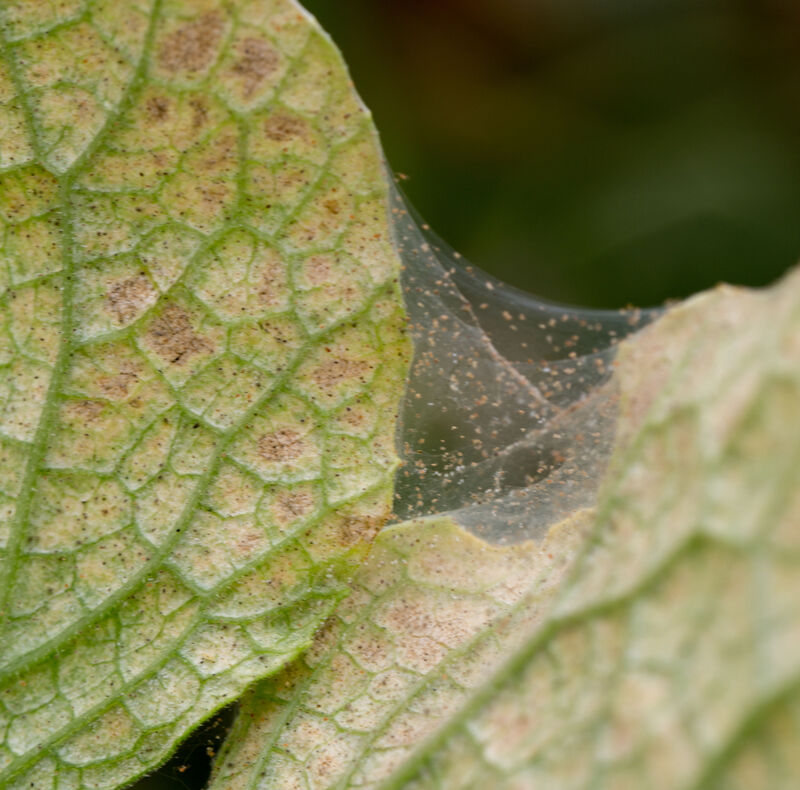
Natural Enemies
Koppert Biological Systems pioneered the development of natural enemies used for biological pest control of spider mite infestations, enabling growers to safely combat this devastating pest without the use of harsh chemicals. In the mid 1960's, Koppert released the first predatory mite, Phytoseiulus persimilis, for the control of spider mites on cucumber plants, and thus laid the foundation for the biological control of many plant pests on numerous plants in the horticultural and agricultural industries. To further support pest control programs, Koppert produces two additional predators for the control of spider mites. In addition to Phytoseiulus persimilis, Koppert produces the predatory mite, Amblyseius californicus, for added control with wide spread spider mite infestations, and the gall midge, Feltiella acarisuga, for intense control in concentrated populations.
Solutions
A proactive approach is important when it comes to biological pest control of two-spotted spider mites. We offer a variety of biocontrol products.
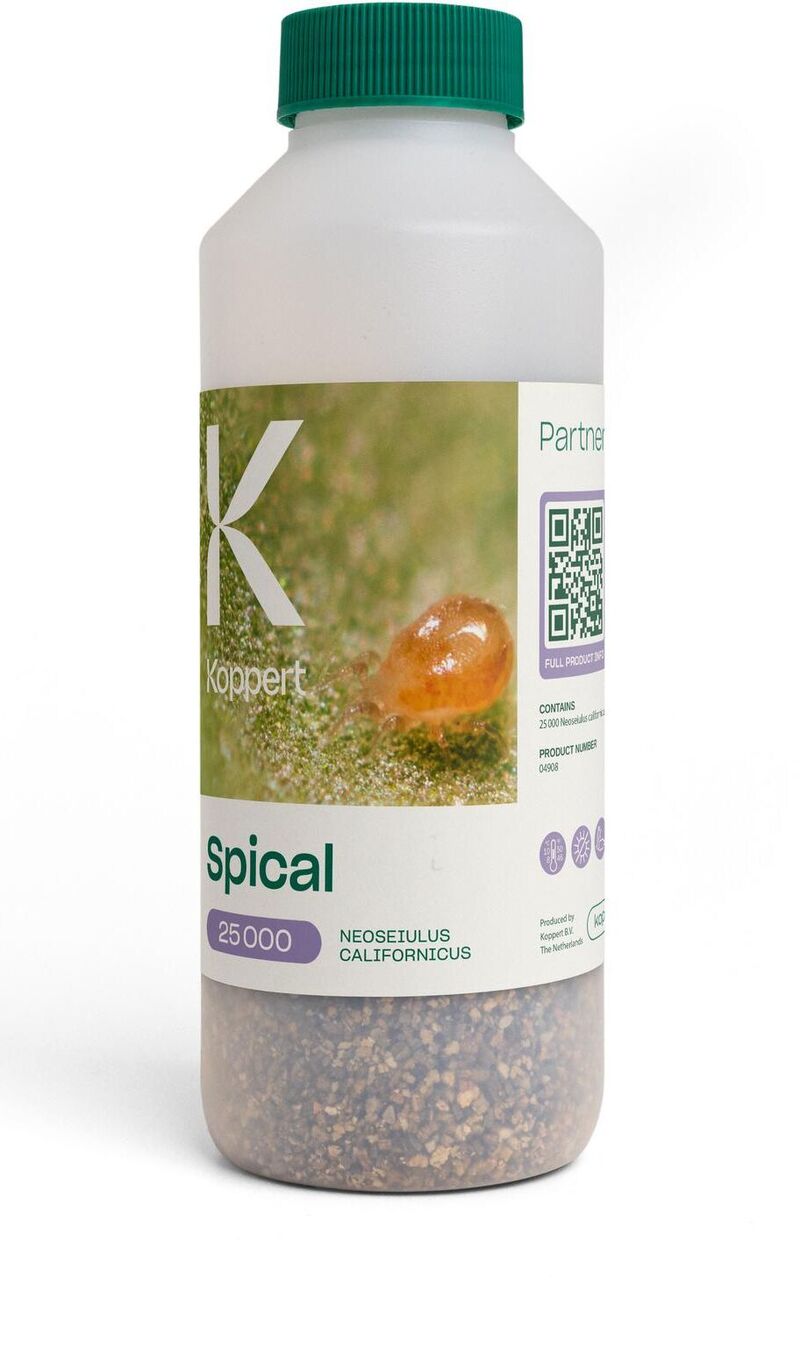
- Predatory mite: Neoseiulus californicus
- Target: Two-spotted spider mite and fruit tree red spider mites
- Packaging: each bottle contains predatory mites (all mobile stages) mixed with inert carrier material
- 250 ml bottle with dosage-plug, containing 5,000 predatory mites
- 500 ml bottle, containing 25,000 predatory mites
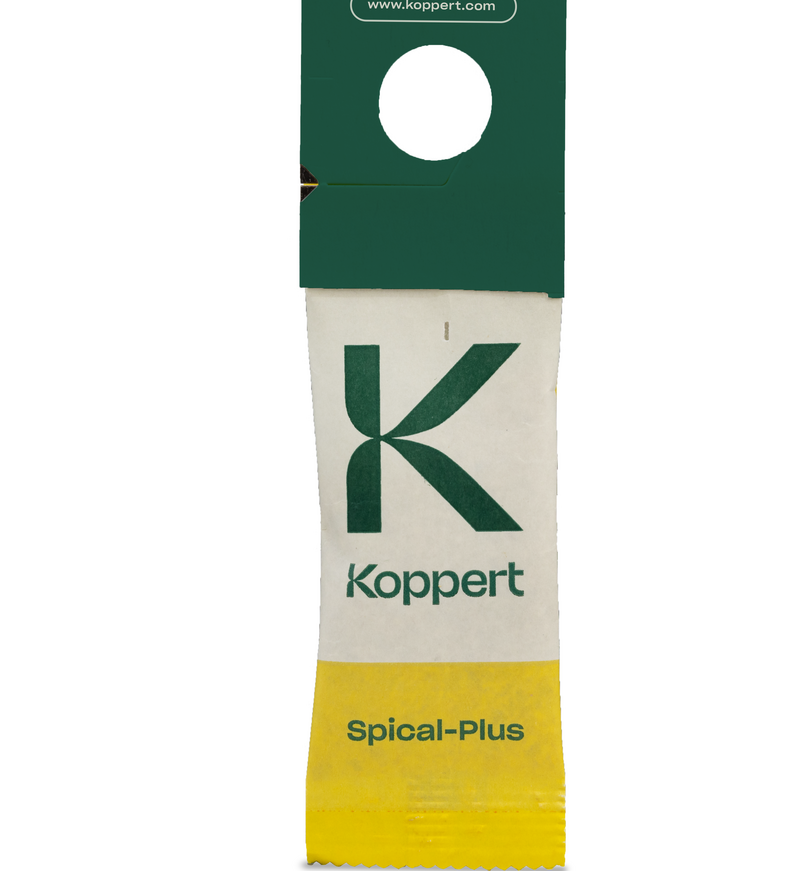
- Predatory mite: Neoseiulus californicus
- Target: Two-spotted spider mite, fruit tree red spider mites, citrus red mite, begonia mite, and broad mite
- Packaging: each sachet contains 100 predatory and storage mites (all stages) mixed with bran
- Box with 100 sachets
- Box with 500 sachets
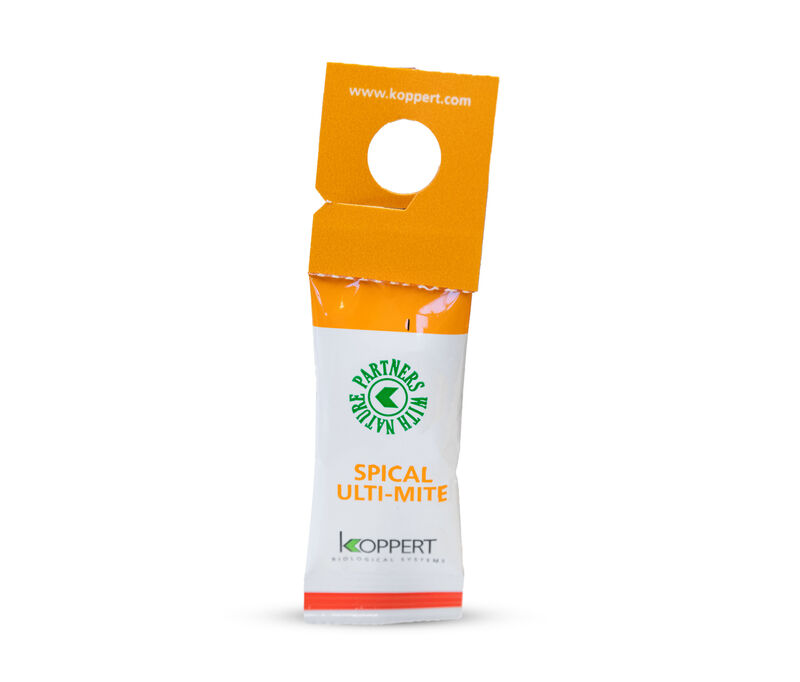
- Predatory mite: Neoseiulus californicus
- Target: two-spotted spider mite, fruit tree red spider mite (also European red mite), citrus red mite, broad mite, cyclamen mite
- Packaging: each sachet contains 100 predatory and storage mites (all stages) mixed with bran
- Box with 500 sachets;
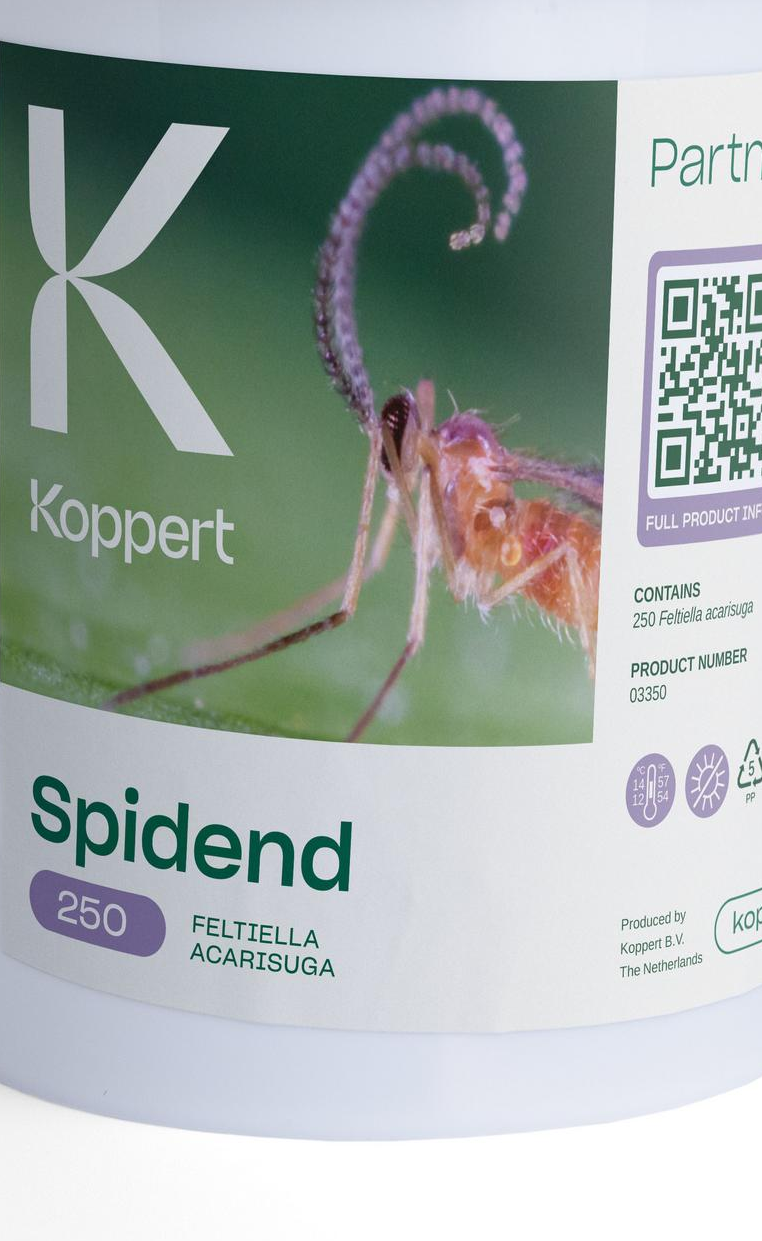
- Predatory gall-midge: Feltiella acarisuga
- Target: Various species of spider mites. Spidend is recommended especially when spider mites occur in colonies
- Packaging: each can contains pupae on leaf;
- 550 ml can, containing 250 gall-midges;
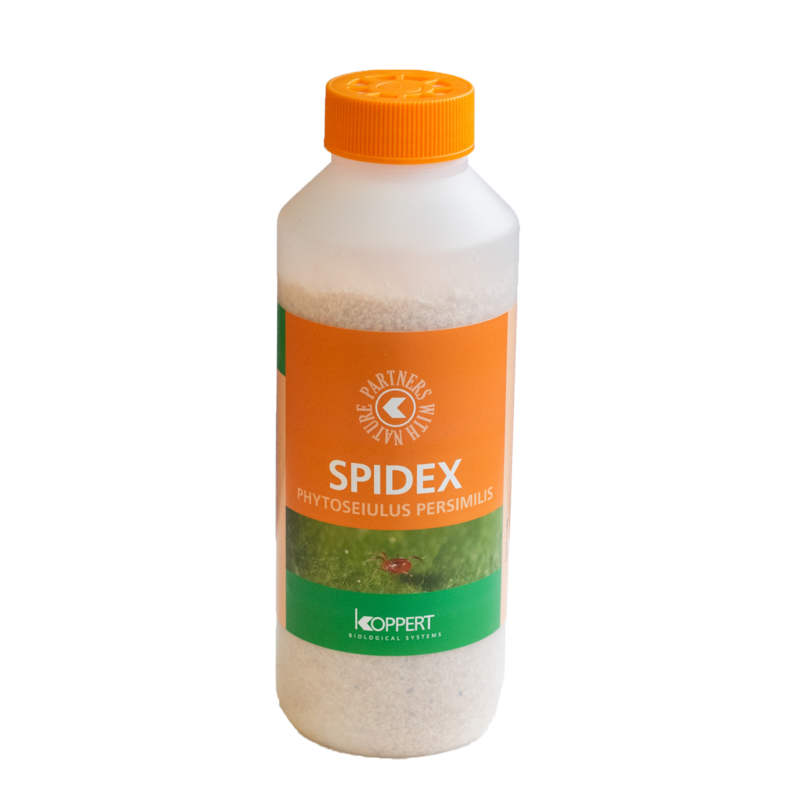
- Predatory mite: Phytoseiulus persimilis
- Target: Two-spotted spider mite (All stages, preferring younger stages)
- Packaging: each bottle contains adults mixed with wood-chips
- 100 ml bottle with dosage-plug, containing 2,000 adults
- 500 ml bottle, containing 10,000 adults
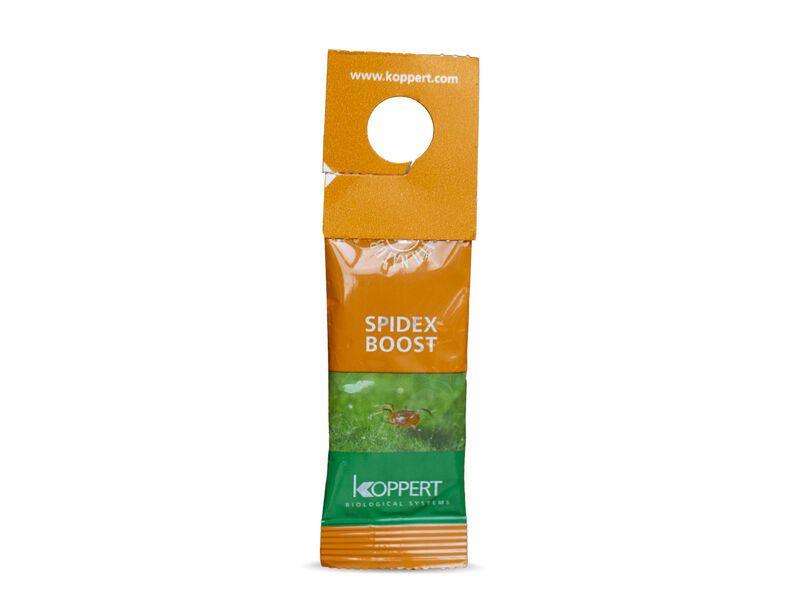
- Predatory mite: Phytoseiulus persimilis
- Target: Two-spotted spider mite (All stages, preferring younger stages)
- Packaging: each sachet contains 100 predatory mites
- Box with 250 climate-resistant sachets
Recommendations
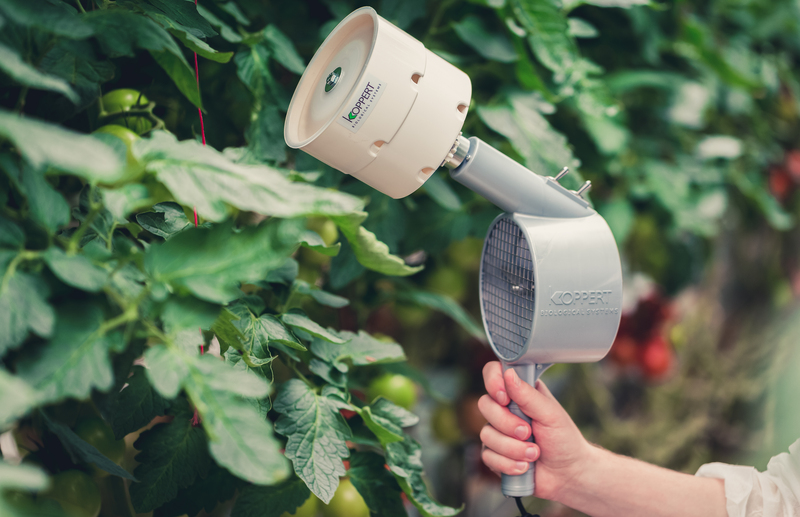
Distribution Technology
Distribution technologies enable a more efficient and effective way of distributing beneficial insects throughout the greenhouse or open field.
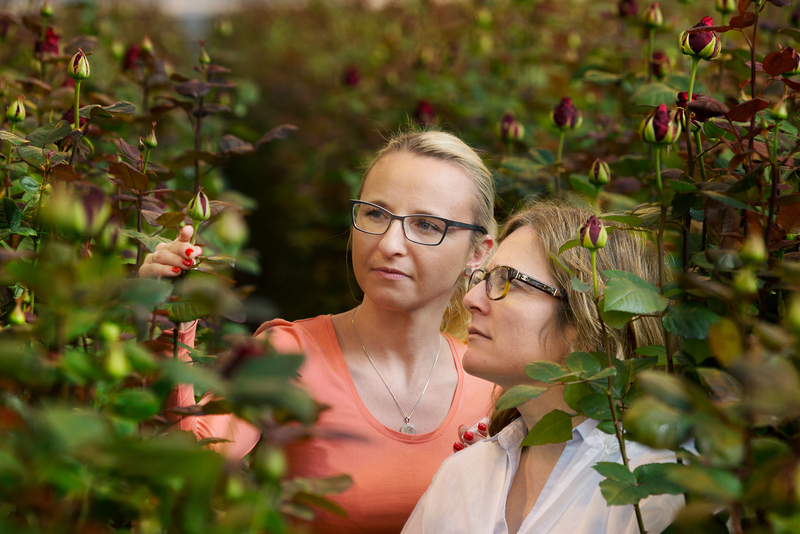
We're Here to Help
Beneficial insects are susceptible to chemical treatments and varying environmental and biological conditions. Contact your local Koppert consultant or visit our Contact page to discuss these solutions in more detail.
Additionally, visit our Side-Effects Database for compatibility of these solutions with chemicals.
Additional Information
- For additional information regarding introduction rates visit the product's web page or contact a Koppert consultant.
- Optimize scouting efforts with Koppert iPM, intelligent Pest Management. Learn more at www.koppertipm.com.